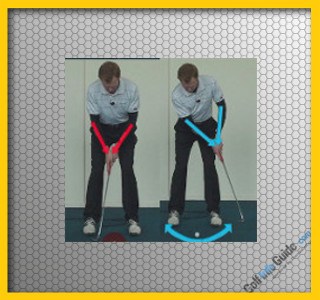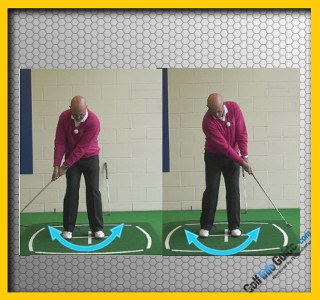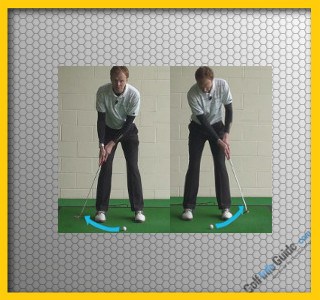Putting can be the most frustrating part of golf. It’s the only area of the game that has made people quit forever. We all feel improvement is right around the corner with our long game. But if we consistently struggle on the greens, or can’t make straight forward putts regularly, it becomes mind numbing. When you miss putts in varying ways, it can be hard to correct. However, if all you struggled with was pulling putts, you may only have one or two mechanical errors occurring. This means, it won’t take as long as to fix as you may think.
Many professionals over time have hated putting, while others loved it. Regardless of your talent, it’s important to have a positive outlook on your short game. The odds are in your favor if you view yourself as a great putter (even though you may miss your fair share of putts). Ben Hogan, Vijay Singh, Sam Snead and George Knudson were all players that hated putting so much that they decided to work harder on hitting the ball closer to the hole. While Brad Faxon, Ben Crenshaw, Billy Casper, Jack Nicklaus and Tiger Woods viewed putting as their strength. The more positive we are with our skills on the green the better we’ll ultimately become.
A pulled putt is simply a putt that’s hit with a closed face at impact and travels straight left (right for left handed golfers). There are a few reasons this happens and below are some quick tips to help you eliminate the pulled putt.

When you pull a putt it’s often because the toe of the putter got ahead of the heel through impact. This results when the left hand (right hand for left handed golfers) either rotates early or has tension at impact that causes the face to close. A great drill to practice is to ensure your lead hand keeps moving down the target line. You can place a shaft on the ground and take practice swings along it. All the while keeping your putter moving sown the shaft through impact. This will train your lead hand to move down the target line rather than rotating early to the inside.

A common flaw when players start missing makeable putts from inside ten feet, is their stroke becomes too long in the backswing. This means the backswing travels too far and at impact there’s a deceleration of speed and a stopping of the putter shortly thereafter. If we wish to achieve solid contact with the putter, it’s important to keep our stroke short in the backswing and keep the blade moving down the target line. This creates a short to long stroke with perfect timing at impact. When someone is having problems pulling a putt, it’s very likely they have a slightly longer stroke than they normally would. Shorten it up on the backswing to keep the blade square.

Over time we’ve seen a variety of different putting stances, strokes and grips. Many people have an open stance to putt i.e. Jack Nicklaus and this is because it helped them to see their intended line better when over the ball. However, those that putt with an open stance share one thing in common with every other great putter… their shoulders were perfectly square. No matter how you stand while putting, remember to have your shoulders square to the target line at address. This will help you take the putter away square and along your target line. For those that pull their putts, there’s a high percentage that your shoulders are open. Next time you practice or warm up before playing, hit some putts and focus on square shoulders. Keep everything else the same and you’ll be amazed how well you hit the intended line.

Tip #4 Straight back – Straight through
To avoid pulling putts, you need to make sure the putter travels along the target line. There’s much written about an arcing putting stroke and the benefits. However, when you physically attempt to arc your stroke, there will be an extraordinary amount of timing required to make perfect contact. The simplest and most effective stroke remains to be the straight back-straight through method. Keep in mind, the longer distance we putt from there will be a natural arcing of the stroke. But from in close, we need to keep the putter moving along the target line. To practice the straight back-straight through stroke, simply place two clubs just above and below your putter. Place a ball in the middle, and slowly take a stroke and feel the difference. Make ten putts nowhere near a hole, then make ten putts from a relatively straight six footer. If you consistently practice this stroke, you will keep the putter square and stop pulling from in close.






